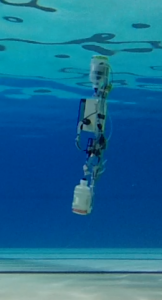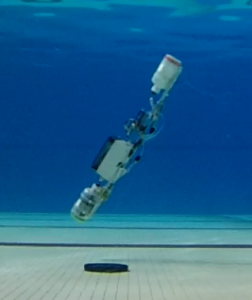Variable Buoyancy System for Unmanned Multi-Domain Vehicle
Unmanned multi-domain vehicles have a unique concept of operations that traditional variable buoyancy system (VBS) designs are not well suited for. Our current research is investigating a VBS actuator design that focuses on vehicle design objectives of high endurance, stealth, and loitering while underwater. The design consists of an elastic bladder housed within a rigid ballast tank, a hydraulic pump, and proportionally controlled vent valve. Ambient surrounding water is the system working fluid and the elastic bladder serves to separate the gas–water interface, eliminating the risk of the compressed gas escaping when venting the water during extreme pitch maneuvers. A nonlinear analytic model of the VBS is derived and used to examine the parameter design space and the effects on water flow rate, actuation force, and energy efficiency. The VBS actuator design is shown to require a smaller, denser energy storage device than a variable buoyancy system that exclusively uses compressed air. A vehicle model with forward and aft VBS actuators is also being studied. The dual actuator setup enables vehicle pitch control by shifting the center of gravity along the vehicle’s longitudinal axis.


Publications:
- MacLeod, M. and Bryant, M., “Dynamic Modeling, analysis, and Testing of a Variable Buoyancy System for Unmanned Multidomain Vehicles,” IEEE Journal of Oceanic Engineering, Vol. 99, pp.1-11,2016.
